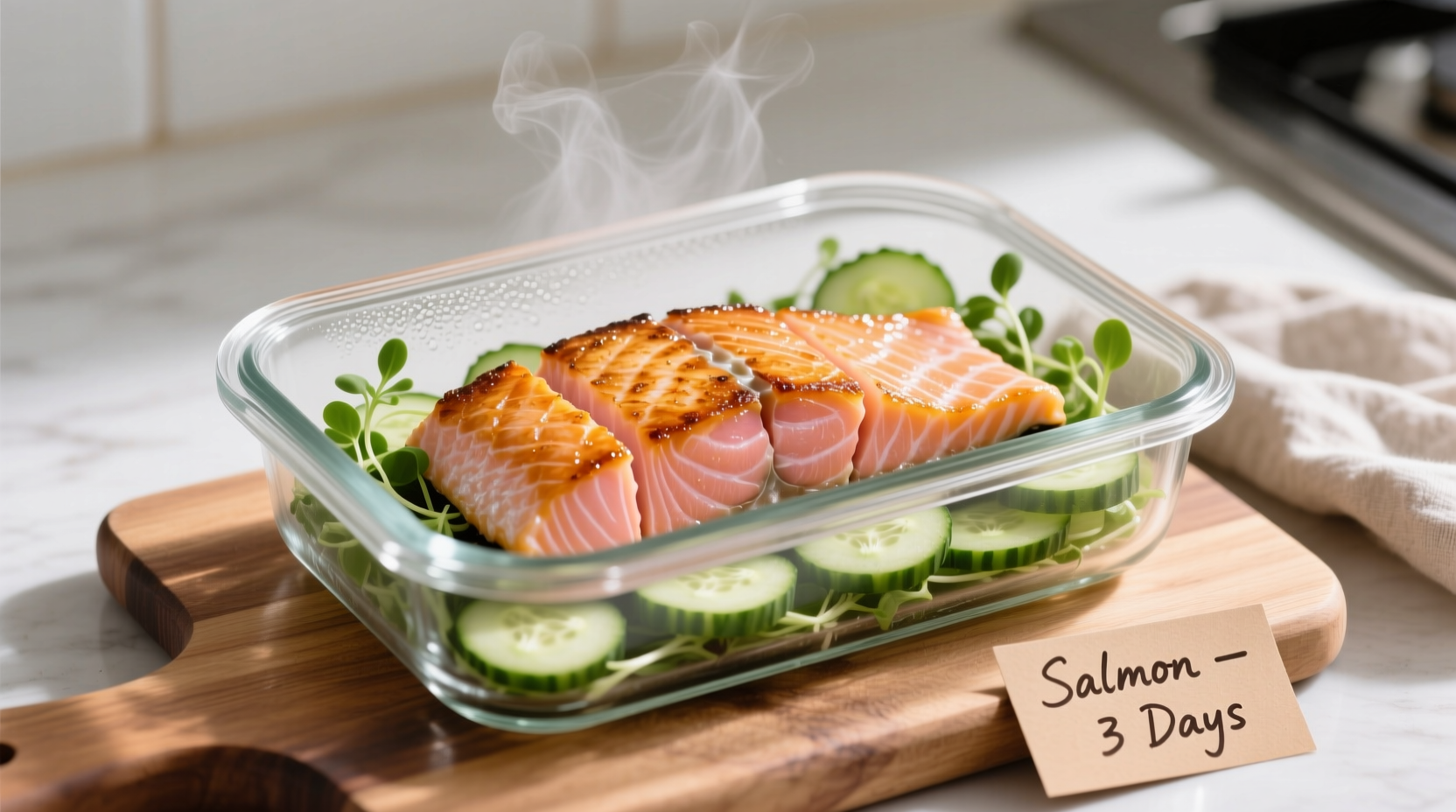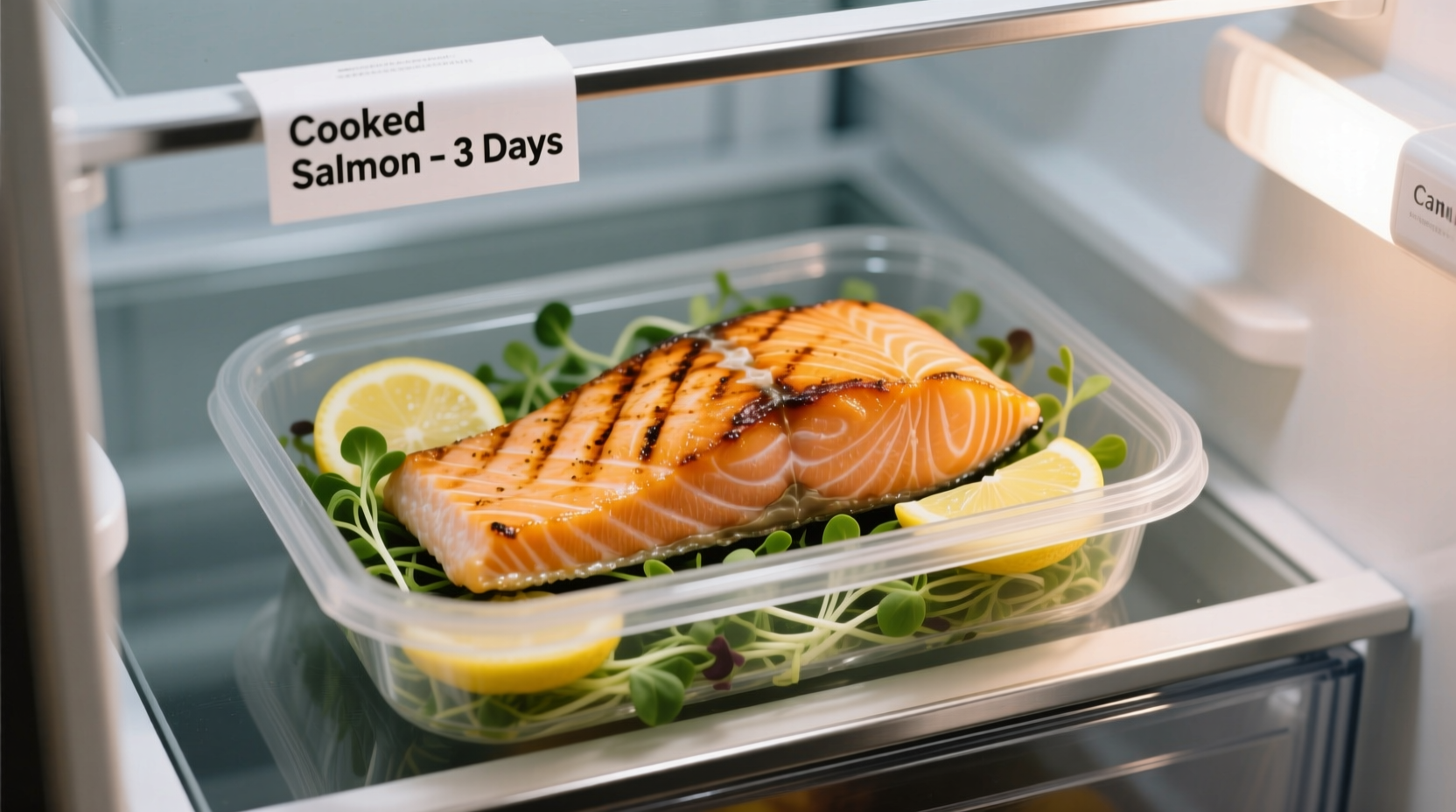Cooked salmon safely keeps in the refrigerator for 3-4 days when stored properly at 40°F (4°C) or below. This timeframe applies to all cooked salmon varieties including baked, grilled, or pan-seared, provided it's cooled correctly and stored in airtight containers. Beyond this window, bacterial growth increases significantly, raising foodborne illness risks.
Wondering if that leftover salmon from last night's dinner is still safe for lunch today? You're not alone. Millions of home cooks face this food safety dilemma weekly. Getting this right matters more than just avoiding waste—it's about protecting your health while making the most of your meals.
Why Proper Salmon Storage Time Matters
Consuming spoiled cooked salmon can lead to foodborne illnesses like Salmonella or Listeria infections. According to the USDA Food Safety and Inspection Service, cooked fish becomes unsafe after 4 days in the refrigerator due to bacterial proliferation even when stored at proper temperatures. The Centers for Disease Control and Prevention reports that improperly stored seafood contributes to approximately 17% of foodborne illness cases annually in the United States.
How to Maximize Your Cooked Salmon's Freshness
Follow these science-backed steps to ensure your cooked salmon stays fresh for the full 3-4 day window:
Cooling Process: The Critical First Step
Never place hot salmon directly in your refrigerator. This raises the internal temperature of your fridge, creating a breeding ground for bacteria. Instead:
- Cool cooked salmon at room temperature for no more than 2 hours (1 hour if room temperature exceeds 90°F/32°C)
- Divide large portions into smaller containers to accelerate cooling
- Place containers in an ice bath for faster temperature reduction
Storage Containers Make All the Difference
Research from the National Center for Home Food Preservation shows that airtight containers reduce spoilage rates by 40% compared to loosely covered dishes. Choose:
- Glass containers with locking lids
- Food-grade plastic containers specifically designed for refrigeration
- Heavy-duty aluminum foil with tight double folding

When the 3-4 Day Rule Doesn't Apply
While 3-4 days is the standard guideline, certain conditions alter this timeframe significantly:
| Storage Condition | Safe Refrigeration Time | Key Risk Factor |
|---|---|---|
| Left at room temperature >2 hours | Discard immediately | Rapid bacterial growth in temperature danger zone |
| Refrigerator temperature >40°F (4°C) | 2 days maximum | Warmer temps accelerate spoilage |
| Added sauces or marinades | 2-3 days | Additional moisture promotes bacterial growth |
| Previously frozen then cooked | 3 days | Texture changes accelerate spoilage |
Recognizing Spoiled Cooked Salmon: The Warning Signs
Trust your senses before consuming refrigerated salmon. The FDA Food Code specifies these clear indicators that cooked salmon has spoiled:
Visual Cues
- Discoloration (grayish tint instead of vibrant pink-orange)
- Visible mold spots (white, green, or black)
- Excessive liquid pooling in container
Smell Test
- Strong ammonia-like odor
- Sour or acidic smell
- Fishy smell intensifies rather than diminishes
Texture Changes
- Slippery or slimy surface
- Unnaturally soft or mushy consistency
- Sticky residue on fingers after handling
When in doubt, throw it out. The USDA emphasizes that harmful bacteria that cause foodborne illness often don't produce noticeable changes in food appearance, smell, or taste.
Extending Your Cooked Salmon's Life Beyond 4 Days
If you won't consume your cooked salmon within 3-4 days, freezing is your best option:
Proper Freezing Technique
- Cool salmon completely using the methods described earlier
- Wrap tightly in heavy-duty aluminum foil or freezer paper
- Place wrapped portions in freezer bags, removing all air
- Label with contents and date
- Store at 0°F (-18°C) or below
According to the National Center for Home Food Preservation, properly frozen cooked salmon maintains best quality for 4-6 months. While safe indefinitely at 0°F, texture and flavor degrade over time.
Common Storage Mistakes That Shorten Shelf Life
Avoid these frequent errors that compromise your cooked salmon's safety and quality:
- Storing in the refrigerator door - Temperature fluctuations reduce shelf life by 25%
- Using takeout containers - Most aren't designed for proper food preservation
- Leaving salmon uncovered - Promotes moisture loss and odor absorption
- Reheating multiple times - Each cycle brings food through the danger zone
For optimal safety, USDA recommends reheating cooked salmon only once to an internal temperature of 165°F (74°C), verified with a food thermometer.
Special Considerations for Different Salmon Preparations
Certain cooking methods and ingredients affect storage duration:
- Smoked salmon: Follow different guidelines (typically 1-2 weeks refrigerated)
- Salmon in creamy sauces: Reduce storage time to 2 days maximum
- Raw salmon marinated in acid (ceviche): Not suitable for refrigeration beyond 2 days
- Salmon with vegetables: Storage time determined by the quickest spoiling ingredient
Remember that these guidelines apply specifically to cooked salmon. Raw salmon has different storage requirements and timelines.











 浙公网安备
33010002000092号
浙公网安备
33010002000092号 浙B2-20120091-4
浙B2-20120091-4